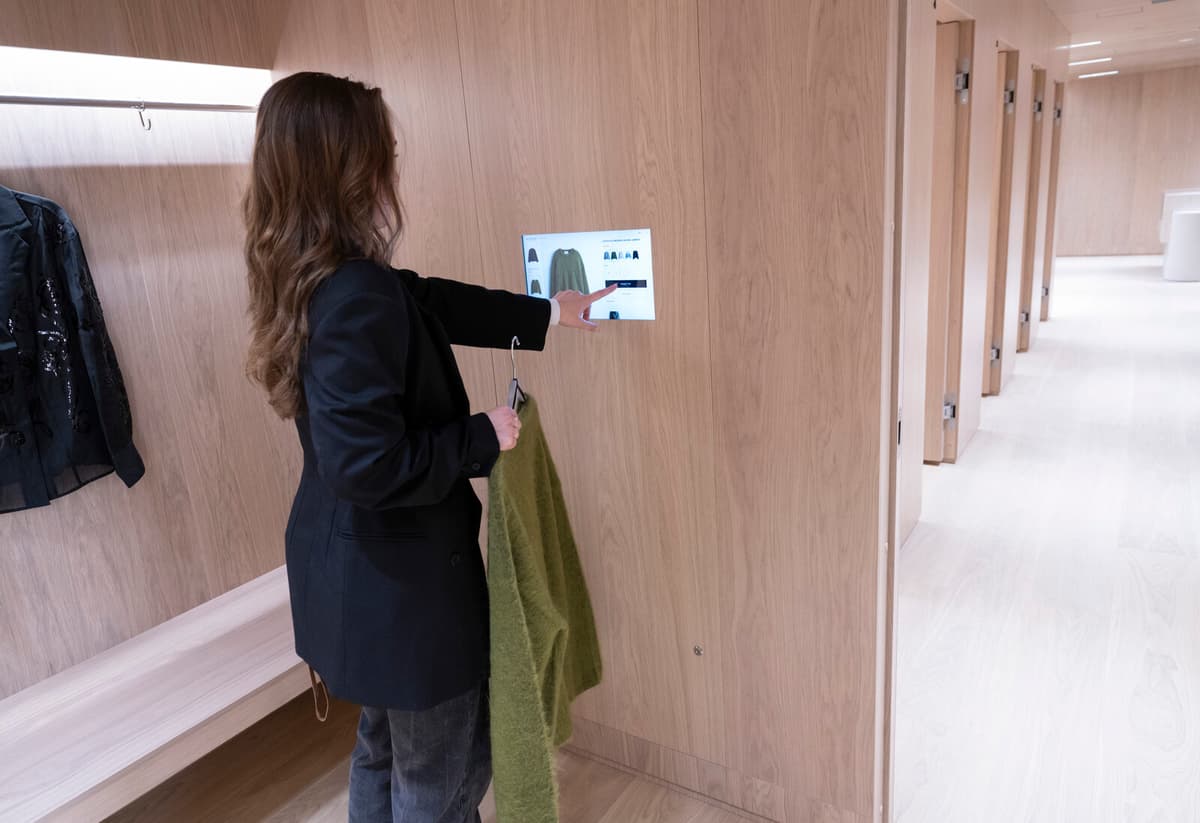With a total of 4,500 square meters, it is H&M's largest store in Sweden. After launches in New York and Seoul, the renovated flagship store in central Stockholm is also the first in Sweden where H&M is testing the concept of what is referred to as "smart fitting rooms".
In practical terms, it means that customers who enter such a fitting room are greeted by a large touchscreen.
So-called RFID technology reads which garments the customer has brought with them. The garments appear on the screen, and if the size does not fit, the customer can notify the staff to retrieve another size.
For employees in the store, the system means that they know exactly where each individual garment is located in the store. And if the customer is unsure, they can get inspirational tips via the screen, for example, about tops that match the pants they are trying on.
With these readers, we get updates several times an hour on what has been sold. In the large stores, we can thus become much better at providing sizes, and it's also something we've received feedback on, that it can be difficult to find the right size, says Camilla Henriksson, who is responsible for upgrading H&M's physical stores globally.
Technical solutions like these are intended to increase the attractiveness of physical stores in competition with primarily online shopping.
If you look at an H&M store 25 years ago, it was different. Then you didn't have to do as much. The store had a pulling power in itself, says Camilla Henriksson.
The discussion about "store death" gained new momentum during the pandemic, with fears that e-commerce would threaten the survival of physical stores. For H&M, with around 5,000 stores worldwide, it's not either-or, notes Camilla Henriksson.
I believe very much in the physical store in combination with the digital. I think both are needed, we shouldn't be so afraid to blur the boundaries between what is a digital and a physical store.
One such example, she notes, is the possibility of placing an online order via the fitting room screen if the item is sold out in the store.
In the future, I don't think it will matter whether I shop or get inspired in a physical or digital store. You can do what suits you best.
For H&M and its Spanish competitor Zara, which already uses the technology, it is naturally much easier to invest in such solutions than for many smaller competitors.
The challenge for stores as a whole is, however, complex. According to the latest report from the Swedish Trade Federation, the Swedish retail industry currently consists of around 31,000 stores. The store inventory has decreased clearly, by nearly 3 percent, during the period 2021-2022.
What can physical stores then compete with against e-commerce? Erik Wästlund, professor at Karlstad University, who has researched how people are affected by digital technology in retail, among other things, believes he has the answer:
Shopping in a physical store is a social activity. We two could just as well click home the top online, but then we're doing something together, he says about why one, for example, shops in a store.
Social aspects are extremely important. Then there's the experience itself. The store should be able to deliver an experience that is more value-creating than online.
In H&M's case, it's about offering manicures and makeup in connection with the stores. In a large vending machine on one of the floors, the customer can pay for an unknown item, intended as a surprise.
Can a store then become too big and complex? Absolutely, according to Camilla Henriksson.
I think that previously it was prestige to have really big stores, but now relevance is more important. More of the same is not necessarily a better customer experience.
H&M is now testing so-called smart fitting rooms on several locations, where RFID technology is used to read data contactlessly.
Each individual garment has its own marking on the price tag. Via transmitters in the ceiling, employees can then locate each individual item in the store and know the exact inventory levels.
In the fitting room itself, the customer can see if the garment is available in other sizes and also call for help. An employee receives a message that the customer needs assistance, for example, another garment.
The RFID technology has been used by H&M's Spanish competitor, the fashion chain Zara, since earlier.





